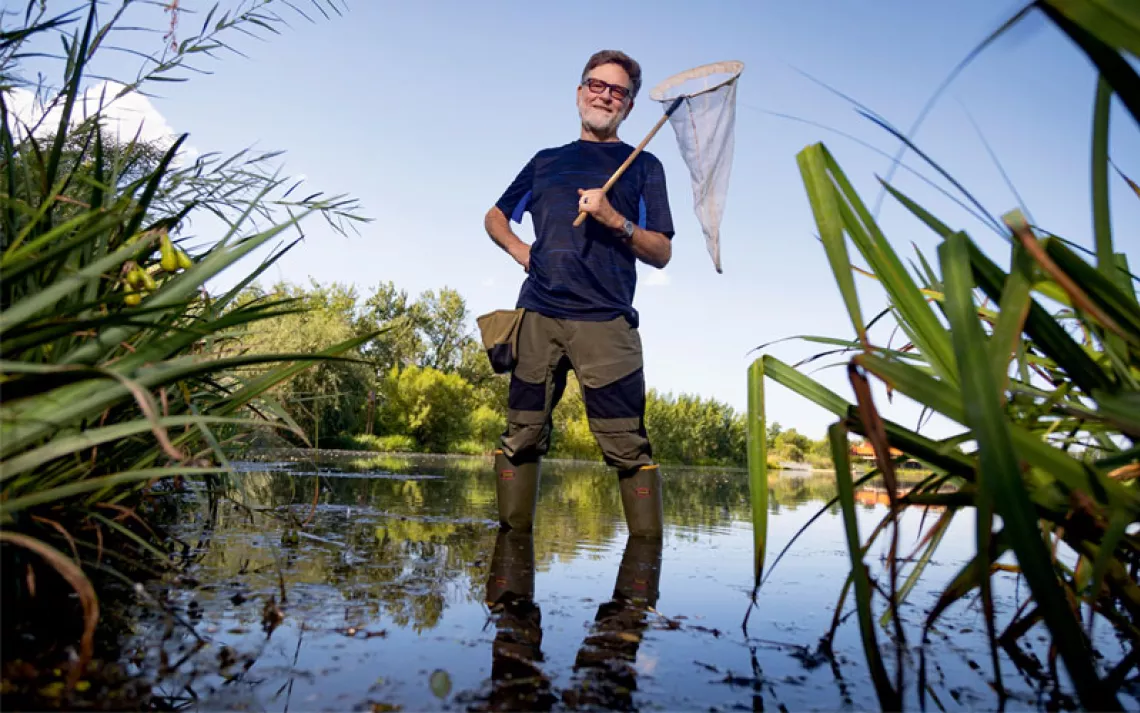Our Keystone XL Victory Is Just the Start

Photo by Javier Sierra
The Keystone XL tar sands pipeline was supposed to reach from Canada clear to the Gulf of Mexico. Instead, on November 6, it ended in the Oval Office.
President Barack Obama's decision to deny a permit for the pipeline is a huge victory for everyone who organized in their communities and demonstrated in the streets to stop this polluting project. In 2008, when Canadian First Nations raised alarms about Keystone XL, we were up against incredible odds. Nearly every expert on energy policy believed that approval of the cross-border route was a done deal, and with good reason. Big energy projects like Keystone XL had rarely been rejected. When they were, it was certainly not based on their contribution to climate disruption.
What set Keystone XL apart was how it dramatized the disconnect between what we need to be doing (reducing carbon emissions) and what we're still doing (opening up new sources of fossil fuels). In the case of tar sands, we're talking about a source that is especially carbon-intensive. The U.N.'s Intergovernmental Panel on Climate Change has made it clear: For us to have at least an even chance of limiting global temperature rise to a survivable level, fossil fuel corporations must keep in the ground three-quarters of their known reserves.
Faced with the realization that the fight to save our climate could be lost on the tar sands fields of Alberta, a quixotic opposition formed to fight the pipeline. From the climate justice activists who marched in the streets of Manhattan to the farmers, ranchers, and tribal leaders in Nebraska, Alberta, and beyond who stood up for their land and water, this coalition was broad, deep, and powerful. Ultimately, the voices of millions of people convinced the White House that Keystone XL was not in the nation's best interest.
The Keystone victory caps a breakthrough year for the climate movement. Last summer, the EPA finalized the Clean Power Plan. Thanks to pollution protections in the plan, the chance of any new coal plants being constructed in the United States is virtually nil. The days are numbered for the outdated plants currently in operation.
Big Oil took another drubbing in 2015. Not long after a flotilla of oceangoing "kayaktivists" blocked Royal Dutch Shell's drilling rig from leaving the Port of Seattle, the oil giant announced that it was abandoning its risky plans to drill in the Arctic's Chukchi Sea. Weeks later, the Interior Department canceled two lease sales for drilling rights in Arctic waters.
On the other side of the clean power equation, 2015 saw the first offshore wind facility in U.S. waters begin construction. In the first half of the year, fully 70 percent of all new electrical power in the country came from renewable energy installations. Energy from wind and solar is cheaper than that from coal or gas in many markets, and by the time my youngest daughter starts high school, wind and solar will be the least expensive new sources of power in the United States, period.
The good news continues abroad. More power from renewables is added each year than from coal, natural gas, and oil combined. China recently announced that it would launch a cap-and-trade system to reduce carbon pollution starting next year, and also pledged $3 billion to help poor countries decarbonize their economies.
By the time you read this, it's quite possible that the world's leaders will have reached a substantive new international climate agreement in Paris. If so, that will be the perfect end to an amazing year. And we're still just getting started. I can't wait to see what happens in 2016.
This article appeared as "On a Roll" in the January/February 2016 print edition of Sierra.
 The Magazine of The Sierra Club
The Magazine of The Sierra Club







